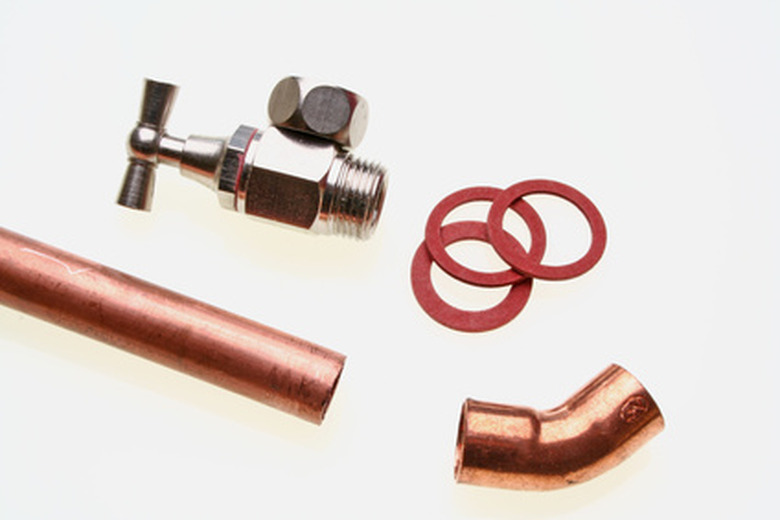Sweat Fittings Vs. Compression Fittings
Copper has largely replaced galvanized steel as the material for household water lines because it is less corrosive and easier to assemble. Copper pipes are usually soldered together, a process called sweating, but they can also be joined with compression fittings. The latter have advantages in certain situations and are used exclusively for gas pipes.
Identification
Identification
Sweat fittings have a nonthreaded joint with a diameter slightly larger than the pipe. They slip onto the pipe, then when hot solder is applied, the solder seeps into the gap and fuses the fitting to the pipe. Compression fittings, on the other hand, have a threaded end with an attached nut. When you remove the nut prior to installation, a ring inside it fits onto the end of the pipe, and when the nut is tightened onto the pipe, the ring compresses around the pipe to form a seal.
Types
Types
Contractors use sweat fittings to couple pipes, form angles and junctions, change pipe diameter and adapt the pipe to a threaded connection. Some valves, particularly in-line water shut-off, also have sweat joints. Compression fittings also work for these purposes, but their main use is for connecting valves and flexible water supply lines at the end point of use. Thus steel or rubber water-supply lines, some angle stops and all gas supply lines have compression ends.
Benefits
Benefits
The main benefits of sweat connections include ease of installation for an experienced plumber and permanence. Contractors consider the ease of installation a major factor for large jobs. Compression fittings are a safe alternative for nonprofessional plumbers with limited confidence to make sweat connections. Since compression fittings don't require heat, they can be used in tight quarters. Workers can also disassemble compression fittings, which is an advantage when hooking up appliances and other moveable fixtures.
Considerations
Considerations
Compression fittings will leak if the pipe inserts are kinked or not completely straight. They will also fail if the pipes are subject to vibrations or movement. While sweat connections will last as long as the pipes, the same cannot be said for compression connections because the threads and the ring are subject to corrosion over time.
Warning
Warning
For obvious reasons, never use a sweat fitting to join copper gas pipes. Also, when you make a sweat connection on a water line, get it right the first time. If you make a mistake, the connection is difficult to redo. There must be no water in the line when you solder a sweat fitting, because the water will vaporize and prevent the pipe from getting hot enough to melt the solder.
